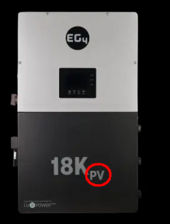Sterling9250
New Member
I am looking to get a device that can take 48 volts from a battery and convert it to 230 VAC. However, I am also wanting the device to be able to take 230 VAC and charge the 48 volt battery, sometimes performing both functions. What exactly would this be if it exists? No solar is involved.
If it sounds weird let me explain. I have spare batteries sitting around. I can charge the batteries at night at 50% of the electrical cost. I can then draw from the batteries during the day where electrical costs are much higher. I can put a timer on the charger to charge only during the night.
If it sounds weird let me explain. I have spare batteries sitting around. I can charge the batteries at night at 50% of the electrical cost. I can then draw from the batteries during the day where electrical costs are much higher. I can put a timer on the charger to charge only during the night.



